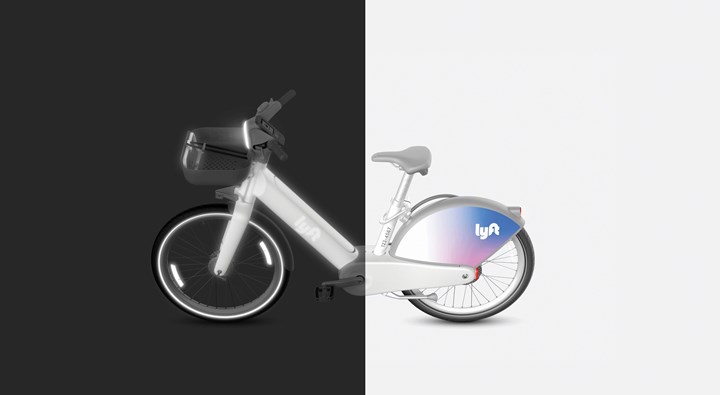Retroreflective Powder Coating Q&A
Insights into how PPG’s retroflective powder coating works.

The daylight color (right) of the Lyft bike that’s part of its bike-sharing service is Abel Gray. At night (left) it appears white, as the PPG Envirocron LUM powder coating is used. It contains glass beads at the surface that reflects light.
Photo Credit: PPG
PPG announced in May that its Envirocron LUM, which it claims is “the world’s first commercial retroreflective powder coating,” is being used by mobility company Lyft to paint its DIVVY bike-share vehicles.
The powder coating aspect is what makes it different, as there have been retroreflective liquid paints available for years.
To get some insights into this coating, we asked Paul Bradley, PPG Manager, Product Development-Powder, Industrial Coatings, to explain the hows, whys and whats of the Envirocron LUM coating.
PF: Solids have long been put into coatings for aesthetic reasons. Why not glass beads until now?
Bradley: The powder industry has been struggling to get the glass beads to stay on the surface of the coatings for decades. Glass beads are heavy and can sink into the coating rending them ineffective in retroreflectivity. PPG leveraged our Global Powder Center of Excellence to keep the glass beads at the surface of the powder coating where they can reflect light. It was a revolutionary accomplishment for the powder industry and PPG is proud to introduce the first commercially available retroreflective powder.
PF: Are there different amounts of glass beads that can be put into the powder for varying levels of reflectivity?
Bradley: There are ways to change the reflectivity of the powder by altering the amount of glass beads in the coatings, but there are other ways to vary the level or reflectivity as well. Details beyond this cannot be discussed as it is propriety to our technology and would impact our patent, which is currently pending.
PF: How big are the glass beads? Do they melt in the oven?
Bradley: The beads are about the same size as the powder coating particles, around 40 microns, about the thickness of a human hair. They do not melt, but they rise to the surface during the melting stage due to PPG’s proprietary powder coating that made this innovation possible.
PF: What colors are involved?
Bradley: We can make almost any daylight color, but the nighttime color, for now, is white as the coating reflects car headlights. It is possible to change the color for the nighttime and something we will explore if demand drives it.
Related Content
-
Products Finishing Reveals 2023 Qualifying Top Shops
Each year PF conducts its Top Shops Benchmarking Survey, offering shops a tool to better understand their overall performance in the industry. The program also recognizes shops that meet a set of criteria to qualify as Top Shops.
-
TTX’s Automated Conveyor Carrier System Offers Wireless, Flexible Operation
ACC system designed for reliable, consistent point-to-point movement of everything from small to heavy parts.
-
Reduced, Reused and Recycled Powder Coatings Are the Future
They say necessity is the mother of invention, and with millions of pounds of powder coating going into landfills a year, these two companies have found novel approaches to dealing with this waste stream.

.jpg;width=70;height=70;mode=crop)









.jpg;maxWidth=300;quality=90)




